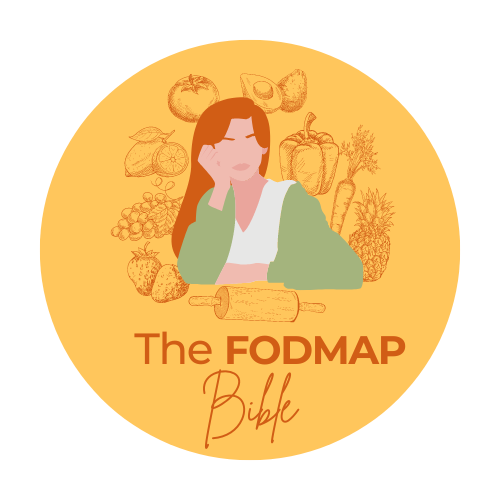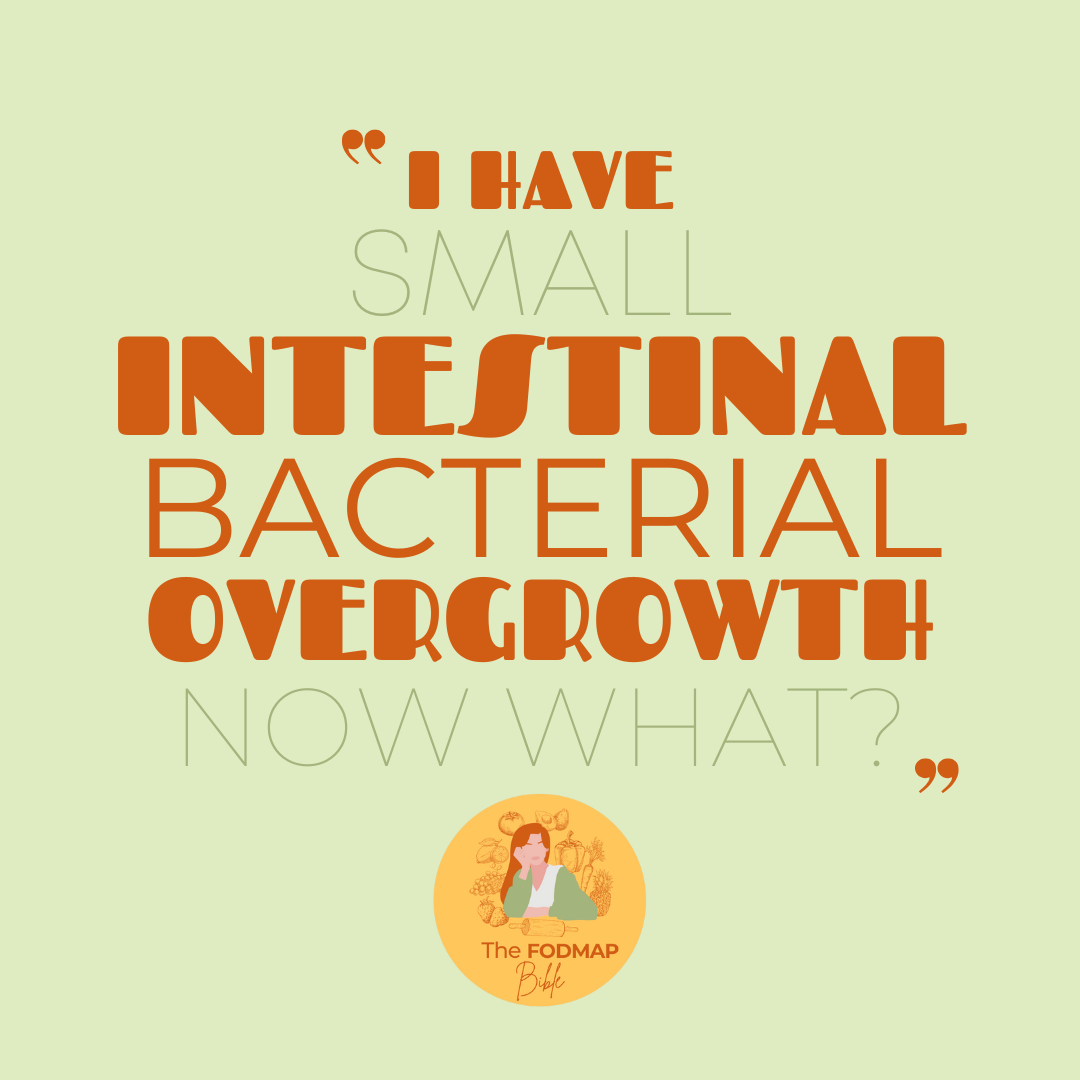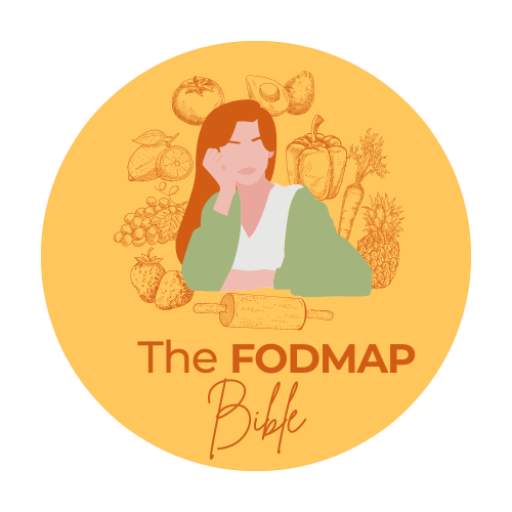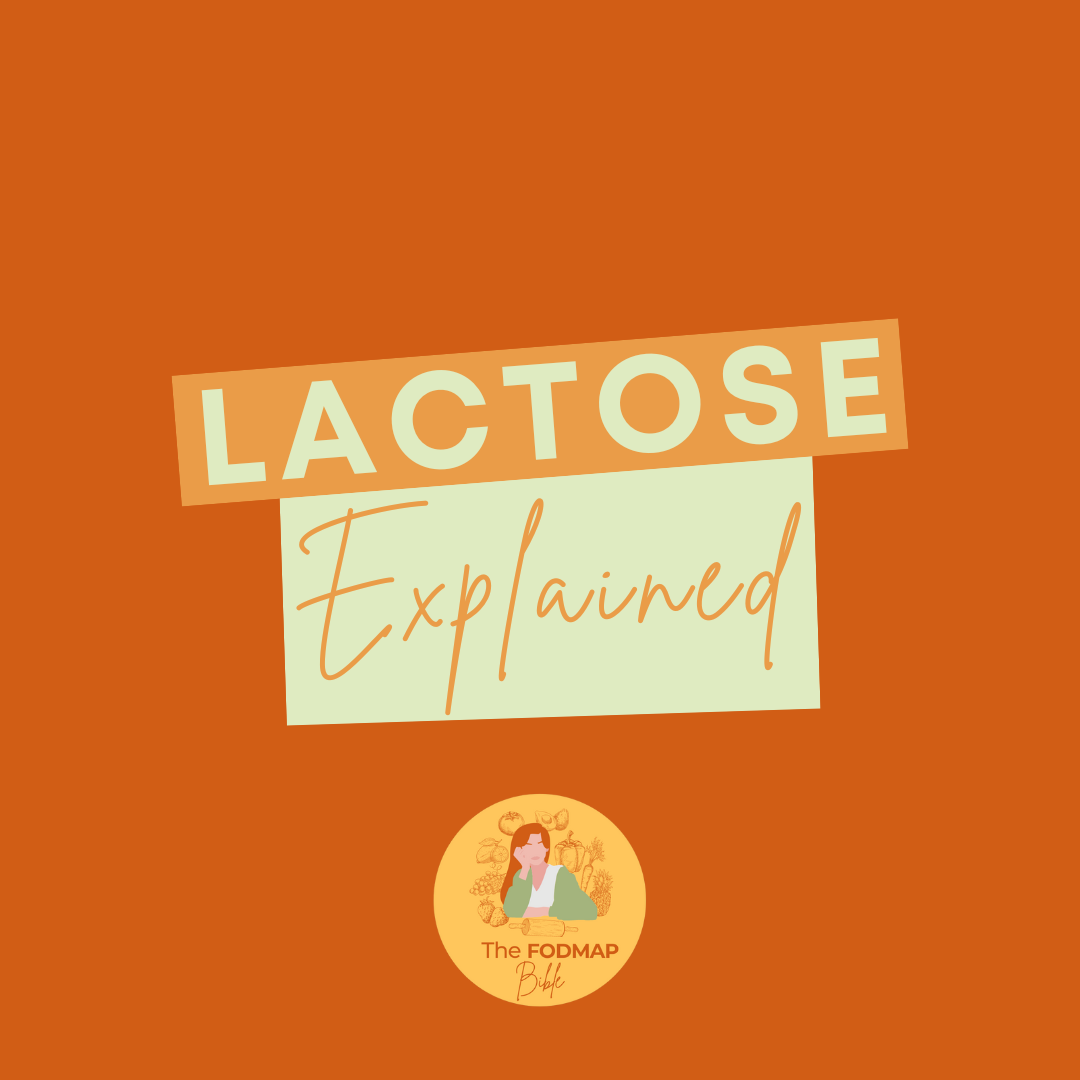
Lactose Explained
FODMAP stands for…
F ermentable
O ligosaccharides
D isaccharides
M onosaccharides
A nd
P olyols
These are the names of a variety of short-chain carbohydrates which are poorly absorbed and rapidly fermented by the gut bacteria, in the gastrointestinal system of people suffering from Irritable Bowel Syndrome (IBS) and / or Small Intestinal Bacterial Overgrowth (SIBO).
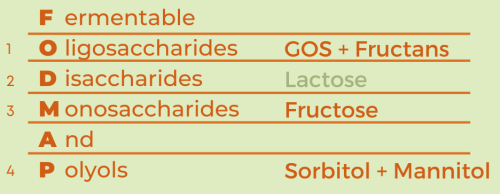
FODMAP stands for Fermentable, Oligosaccharides, Disaccharides, Monosaccharides And Polyols.
The term FODMAP was coined to give a name to 4 categories of short-chain carbohydrates which all irritate the gut, one way or another. These are:
1. Oligosaccharides;
2. Disaccharides;
3. Monosaccharides;
4. Polyols.
Two of these four categories are umbrella terms: oligosaccharides and polyols. In total there are six types of short-chain carbohydrates that irritate the gut, causing the symptoms associated with Irritable Bowel Syndrome (IBS) and Small Intestinal Bacterial Overgrowth (SIBO). These categories are:
• Fructose;
• Lactose;
• Galactoligosaccharides;
• Fructans;
• Sorbitol;
• Mannitol.
Fructose is a monosaccharide.
Lactose is a disaccharide.
Both galactoligosaccharides and fructans are oligosaccharides.
Both sorbitol and mannitol are polyols.
Today we’re taking a closer look at the disaccharide lactose.
Lactose
Lactose is naturally present in products like milk, yoghurt and cheese, but is also added to loads of crisps, chocolate and candy bars.
In order to understand why lactose irritates the gut, we need to take a closer look at what disaccharides are and how the human body digests them. I highly recommend reading our post that gave a detailed look into disaccharides, in case you missed it!
Disaccharides
‘A disaccharide (also called a double sugar or biose) is the sugar formed when two monosaccharides are joined by glycosidic linkage.’ 1 In order to properly digest disaccharides, they first need to be broken down into monosaccharides. This process is called hydrolysis.
For hydrolysis [of disaccharides], the body needs an enzyme called a disaccharidase. ‘Each disaccharide is broken down with the help of a corresponding disaccharidase.’ 1 In the case of lactose, the enzyme needed for hydrolysis is lactase.
Lactose intolerance
Lactose intolerance is the result of a lack of lactase enzymes in the small intestines. This results in the inability to break down lactose into glucose and galactose. Without this enzyme, lactose cannot be split up into the monosaccharides glucose and galactose. Just like with undigested fructose, undigested lactose gets transported into the large intestine.
There it gets fermented by the gut bacteria (= colonic flora). During this process of fermentation the colonic flora releases a combination of hydrogen, carbon dioxide and methane, leading to symptoms like bloating, diarrhea, flatulence and gastrointestinal pain.
Symptoms typically start thirty minutes to two hours after eating or drinking milk-based food. Their severity typically depends on the amount a person eats or drinks. There are four types of lactose intolerance:
1. Primary lactose intolerance
This type of lactose intolerance occurs as the amount of lactase enzymes decreases, as people age. The onset of this type of lactose intolerance generally occurs in late childhood or early adulthood, but the older you get, the more likely it is for this type of lactose intolerance to occur.
2. Secondary lactose intolerance
This type of lactose intolerance occurs as the result of an injury in the small intestines, such as Inflammatory Bowel Disease (IBD), celiac disease, an infection or other diseases.
3. Developmental lactose intolerance
Developmental lactose intolerance usually occurs in premature babies, but generally improves relatively fast.
4. Congenital lactose intolerance
Congenital lactose intolerance is a rare genetic disorder, due to which the body makes very little or no lactase enzymes at all. This condition is generally present at birth.
Fun fact: lactose intolerance is not nearly as rare as one might think it is. Quite the opposite actually. Around 65-70% of the global population is affected by lactose malabsorption, one way or another.
Mammals generally lose their ability to digest lactose, after breastfeeding stops, but nowadays lactose consumption extends far into adulthood. This change in lactose consumption – as a result of domestication of dairy animals – has led to an evolutionary change that has developed differently across various regions and ethnic groups around the world.
Generally speaking, Europeans tend to be able to digest lactose better than those with middle eastern or African descent.
The good news: lactase
The enzyme which digests lactose is called lactase and I happen to have some incredible news about that particular enzyme. Nowadays lactase is sold as an over-the-counter-supplement. Taking this enzyme – when consuming lactose – allows you to consume it without having to sprint to the toilet or get symptoms: fantastic, right!?
One FODMAP down, another 5 for science to fix..
Want to know more about all things low-FODMAP? Follow us on Instagram & TikTok @theFODMAPbible – for recipes, inspiration, explanations and loads of advice on how to make your life on the low-FODMAP diet as enjoyable as it would have been without. Trust me: you won’t regret it, pinky promise!
We hope to see you on our socials 🙂

Please note that we are NOT doctors & we do NOT provide any medical advice
If you’re struggling with symptoms – that could potentially be a gastrointestinal disorder like Irritable Bowel Syndrome (IBS), Inflammatory Bowel Disease (IBD) or Small Intestinal Bacterial Overgrowth (SIBO) – we strongly suggest for you to seek medical help and recommend you to reach out to a healthcare professional, who can offer you the right guidance.
We want to emphasize that the low-FODMAP diet is a medically induced diet, that should be started only when a doctor diagnosed you with a gastrointestinal disorder and should always be done under strict supervision of a specialized dietician or other healthcare professional.
Nonetheless, we maintain strict policies when it comes to the prevention of spreading fake news. Our posts are written by research journalist @byellenmoore and are based upon both scientific research and her own personal experiences with being on the low-FODMAP diet, as a patient suffering from Irritable Bowel Syndrome (IBS). We share what we know, to give you a better understanding of that from which you suffer, in order to make your journey – going low-FODMAP – a little bit easier!
Sources
1: “About: Disacharide.” n.d. Accessed April 27, 2023. https://dbpedia.org/page/Disaccharide.
